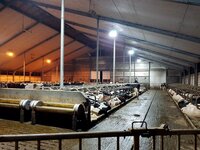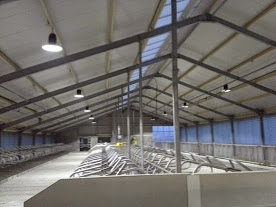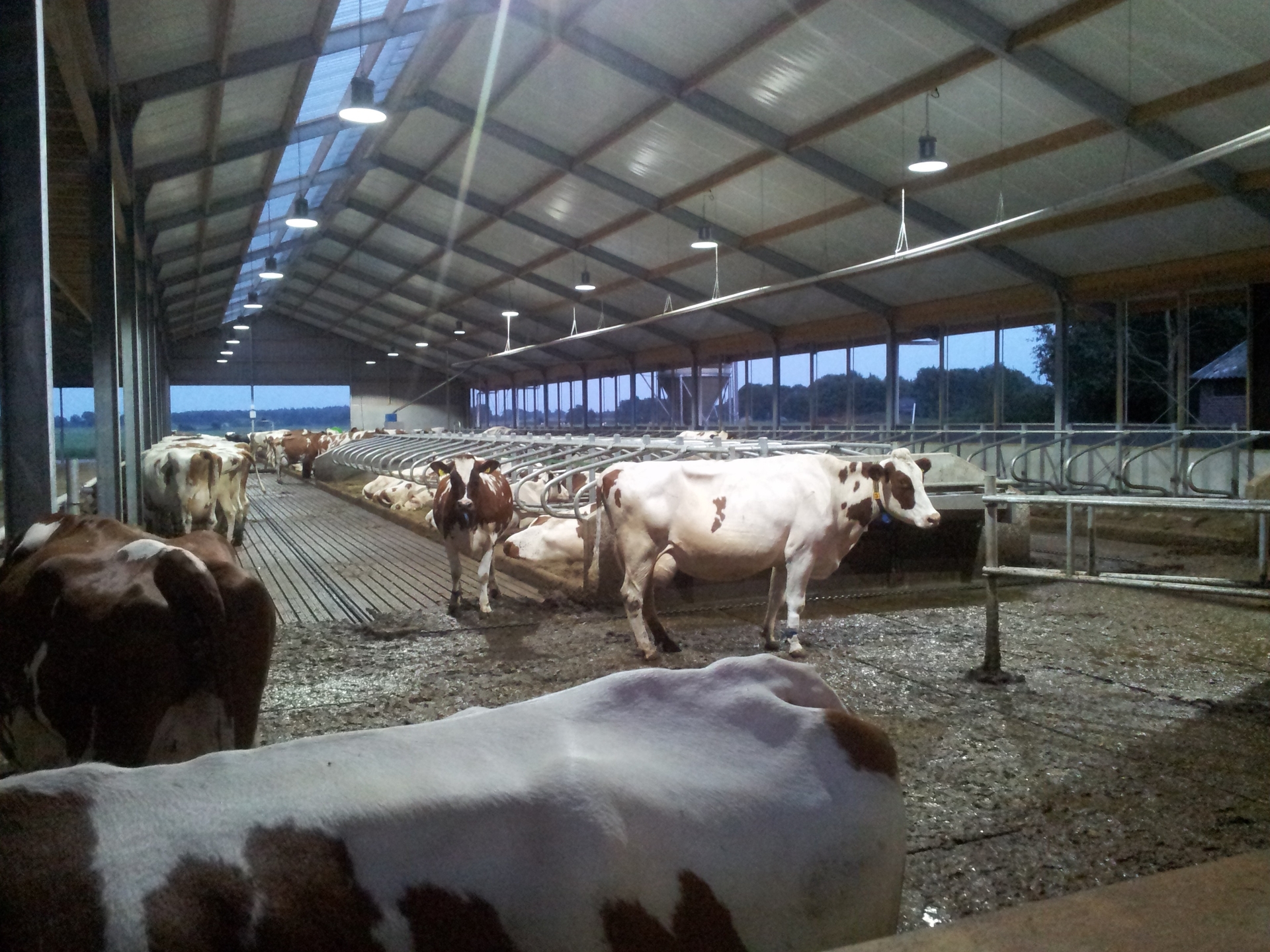
LED lamps and cattle
To see and exhibit natural behavior, young cattle and adult cows or goats need adequate lighting. An illuminance starting at about 130 lux is sufficient for this purpose. In addition, animals need a daily dark period (<5 lux) of at least 6 hours to reset their biological clock.
According to IKB Netherlands (Integrale Keten Beheersing), from January 1, 2024, artificial lighting must be controlled with a timer and be on for 8 consecutive hours to support the day and night rhythm.
Beter Leven Keurmerk has tightened requirements for pig houses. Starting January 1, 2025, pig houses must meet the requirement that the daylight permeable area in walls and roofs must be at least 2% of the floor area.
The development of young stock is stimulated by daylight. Calves and heifers benefit from a day length of about 16 hours. Fertility of cows is also stimulated by a daylight length of about 16 hours.
Milk production of cows and goats can be increased by about 8 to 9 percent by extending the daylight period outside the summer months with lamplight to 16 hours of light (and 8 hours of darkness). This requires an illuminance of at least 200 lux, measured at animal level (that is, at eye level animals).
Working light in the barn
During regular work in the barn, an illuminance of at least 80 lux is needed. For precise work or when much work is done in the (dark) evening hours, higher illuminance levels of up to approx. 250 lux are desirable, such as with the milking robot.
The above described lighting needs of farmer and cow are met by applying an illuminance of at least 150 lux during the daily light period and a daily dark period of at least 6 hours at an illuminance below five lux. The lights should be hung so that an even light distribution is achieved throughout the barn and the aforementioned lighting strengths are achieved at animal level.
The picture hereabove clearly shows the difference between the old-fashioned orange HPS lamps and the bright LED lighting of Vocare Ledlight.
LED lighting advice
For barns with a ridge height of 6 meters and/or higher, Vocare Ledlight recommends the use of clockwise LED fixtures. These high bay fixtures have a nice spread so that an even light level is created in your barn. Highbays with special NANO coating are particularly suitable in dusty areas.
Depending on the size, the wattage of the light source needed to achieve the desired light intensity can be determined.
An additional advantage of LED lighting is that the heat emission of these energy-efficient lamps is much less than that of traditional lamps. This is more pleasant for people and animals!


